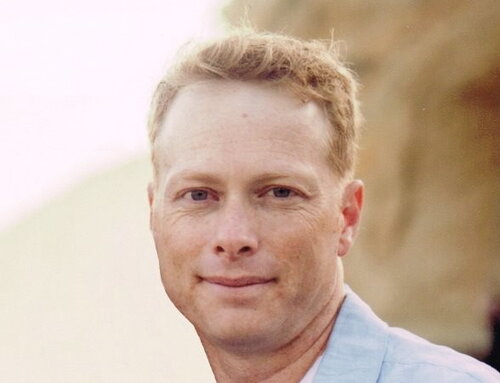
Contact Information
University of Illinois at Urbana-Champaign
College of Veterinary Medicine
2001 South Lincoln Avenue
Urbana, IL 61802
Research Interests
- Neuromodulation of Learning and Memory
- Experience-dependent Synaptic Plasticity
- Circuit Mechanisms of Neuropsychiatric Disorders
- Oscillatory activity in Cognitive Function
- Excitatory/Inhibitory Balance in Circuit Function
Research Description
The goal of our research is to understand how distinct regions of the brain interact as a process of what we experience and how we use that information to inform choice. It is a mystery as to how coordination between brain regions occurs, but overwhelming evidence suggests that rhythms or “brain waves” that are present in all animal species serve as a type of scaffolding that allow for the dynamic coupling of regions together transiently. In diseases such as autism, we believe that local rhythms contribute so strongly to couple nearby neurons that they are not influenced by other regions of the brain. In contrast, in conditions like Parkinson’s disease, we believe that regions of the motor pathways become so ubiquitously over-coupled that it impedes the ability to promote movement.
My lab uses animal models to understand how neuromodulators such as acetylcholine, dopamine, and norepinephrine, contribute to the generation and timing of rhythms that temporally couple neurons and how pathological rhythms can contribute to neuropsychiatric illness and disease. To do so, we apply novel imaging techniques (calcium and voltage imaging) with electrophysiology, allowing us to record from hundreds of neurons across multiple brain regions simultaneously while monitoring changes in brain rhythms. Using optogenetic and chemogenetic targeting tools, we measure how perturbations of neurons that contribute to the generation of rhythms alter coupling between brain regions and how this change influences learning and memory or cognitive and social behavior in mice.
Education
B.S. Biology: University of Utah, Salt Lake City, Utah
Ph.D. Neuroscience: University of Michigan, Ann Arbor, Michigan
Post-doctoral training: Boston University, Boston, Massachusetts
Additional Campus Affiliations
Assistant Professor, Comparative Biosciences
Assistant Professor, Bioengineering
Assistant Professor, Beckman Institute for Advanced Science and Technology
Assistant Professor, Carl R. Woese Institute for Genomic Biology
Recent Publications
Boyd, I. P., Nocon, J. C., Gritton, H., Han, X., & Sen, K. (2025). Parvalbumin neurons and cortical coding of dynamic stimuli: a network model. Journal of neurophysiology, 134(1), 53-66. https://doi.org/10.1152/jn.00283.2024
Gritton, H. J., Booth, V., & Howe, W. M. (2024). Special issue on cholinergic signalling. European Journal of Neuroscience, 59(9), 2131-2137. https://doi.org/10.1111/ejn.16369
Sridhar, S., Lowet, E., Gritton, H. J., Freire, J., Zhou, C., Liang, F., & Han, X. (2024). Beta-frequency sensory stimulation enhances gait rhythmicity through strengthened coupling between striatal networks and stepping movement. Nature communications, 15(1), Article 8336. https://doi.org/10.1038/s41467-024-52664-0
Zhang, X., Dou, Z., Kim, S. H., Upadhyay, G., Havert, D., Kang, S., Kazemi, K., Huang, K. Y., Aydin, O., Huang, R., Rahman, S., Ellis-Mohr, A., Noblet, H. A., Lim, K. H., Chung, H. J., Gritton, H. J., Saif, M. T. A., Kong, H. J., Beggs, J. M., & Gazzola, M. (2024). Mind In Vitro Platforms: Versatile, Scalable, Robust, and Open Solutions to Interfacing with Living Neurons. Advanced Science, 11(11), Article 2306826. https://doi.org/10.1002/advs.202306826
Lowet, E., Sheehan, D. J., Chialva, U., De Oliveira Pena, R., Mount, R. A., Xiao, S., Zhou, S. L., Tseng, H. A., Gritton, H., Shroff, S., Kondabolu, K., Cheung, C., Wang, Y., Piatkevich, K. D., Boyden, E. S., Mertz, J., Hasselmo, M. E., Rotstein, H. G., & Han, X. (2023). Theta and gamma rhythmic coding through two spike output modes in the hippocampus during spatial navigation. Cell Reports, 42(8), Article 112906. https://doi.org/10.1016/j.celrep.2023.112906